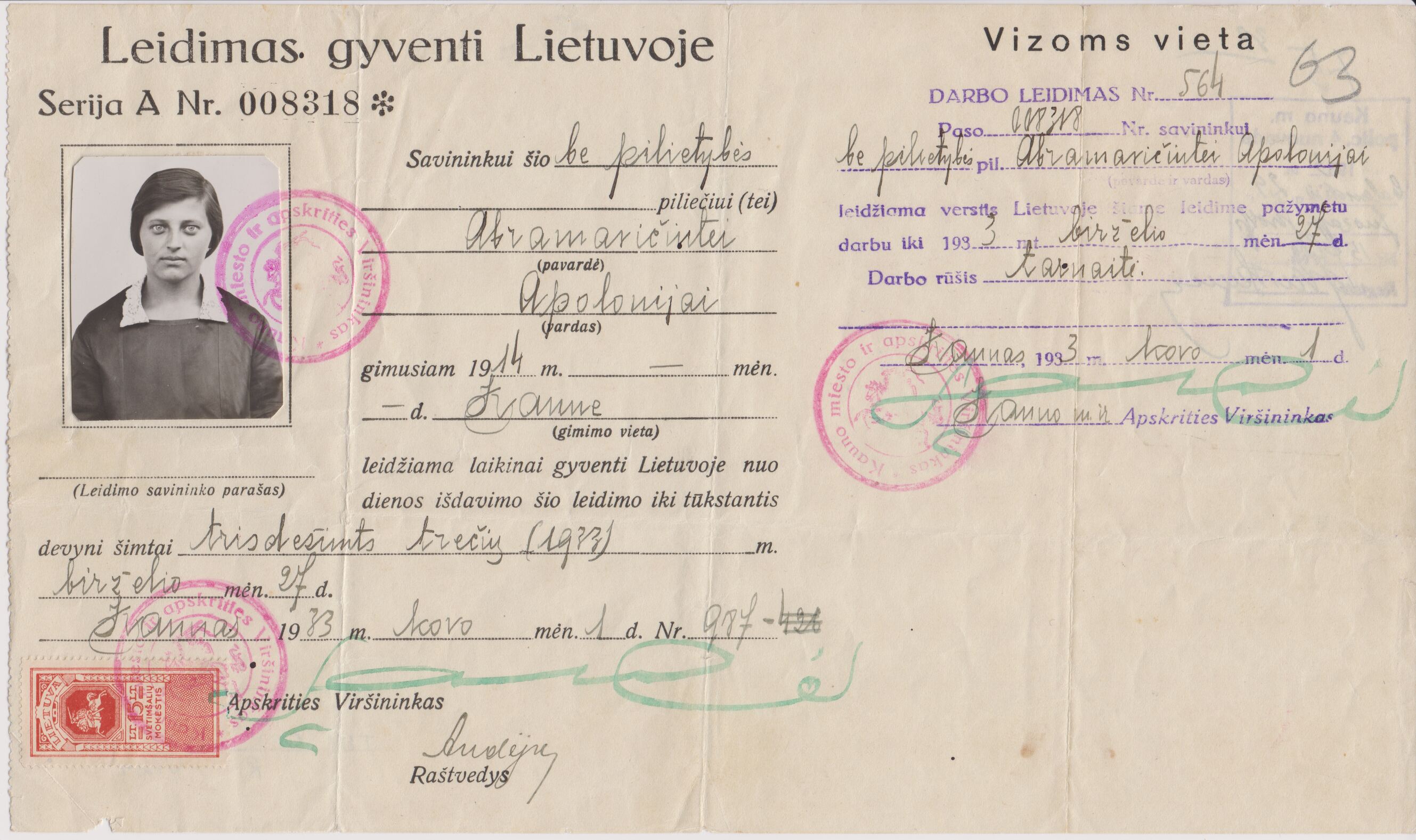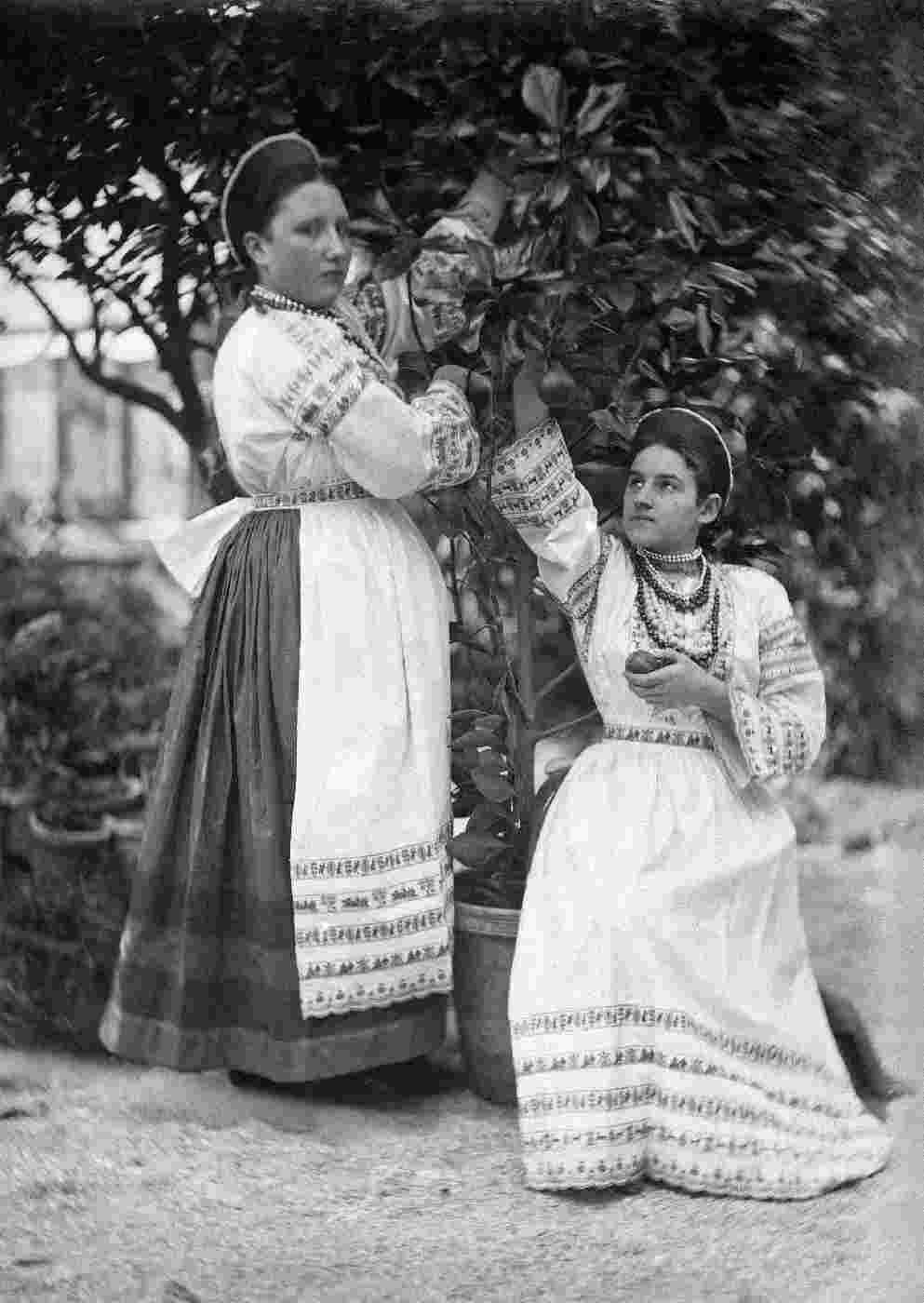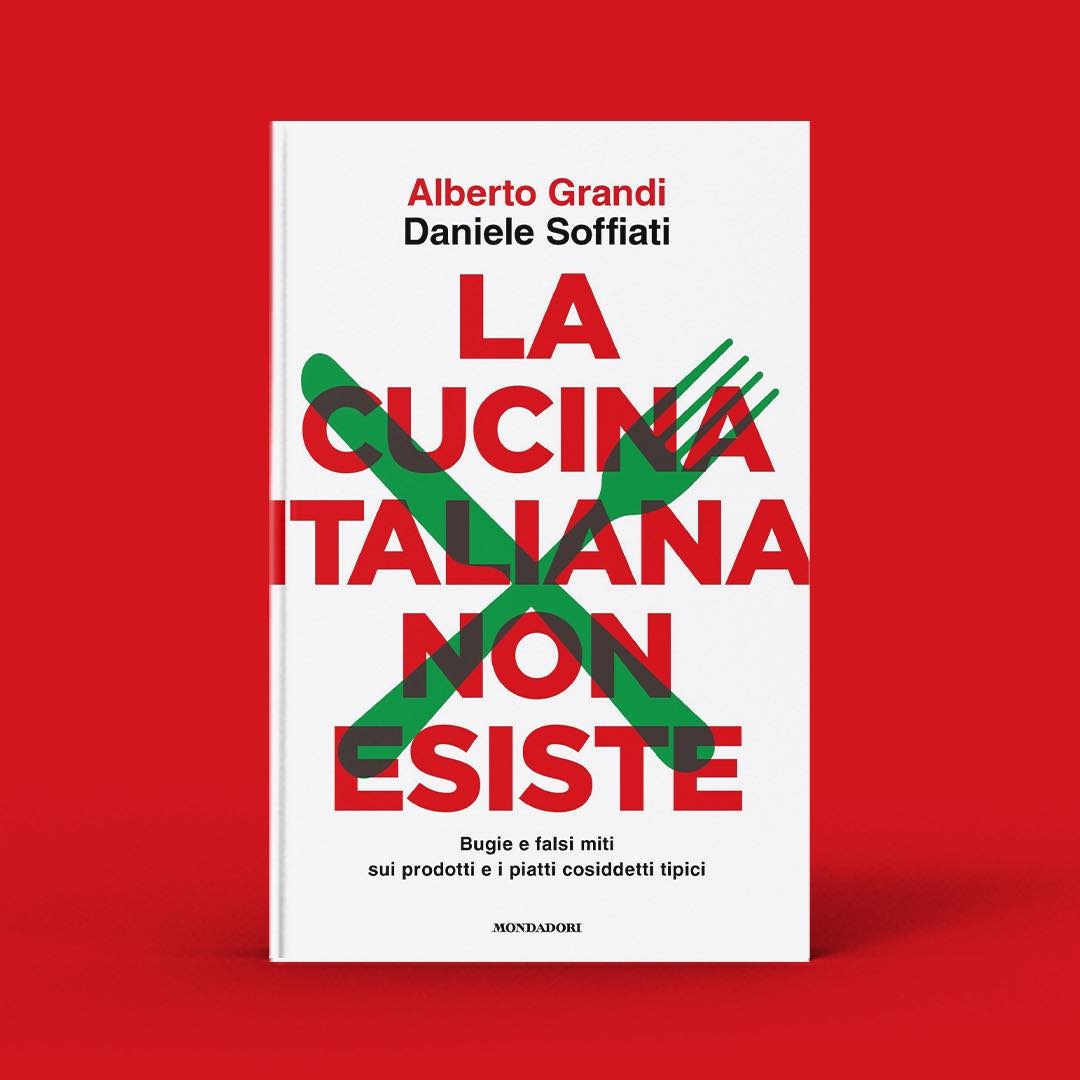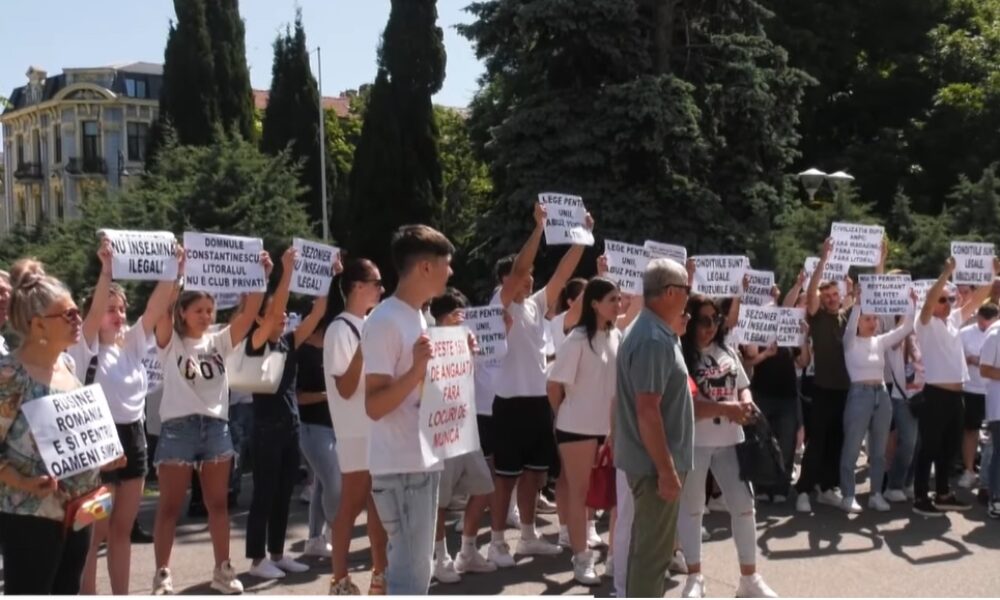The maids lost not only the freedom of action but also the names
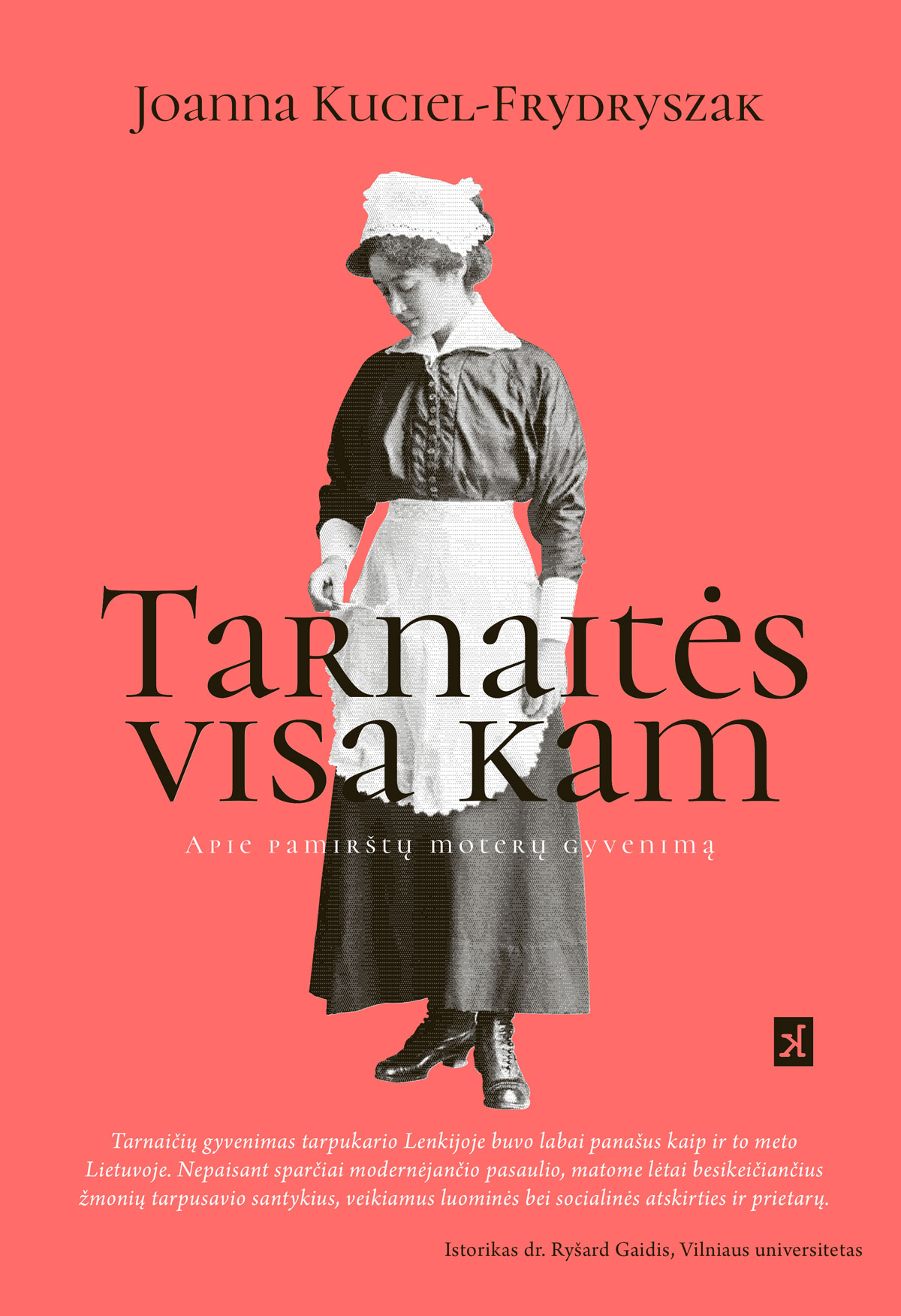
The life of the maids would probably have sank into the past without a brighter footprint, if not for the Polish writer, journalist Joanna Kuciel-Frydryszak. She was able to talk to the Polish maids of the past, based on surviving letters, newspaper messages, blogs, and their stories in the book « Servants All » (translated from Poles, Irena Aleksaitė, published « Other Books »).
The situation of maids in Vilnius or Kaunas was little different from their fate in Poland. With historian dr. In Ugne, Marija Andrijauskaitė is talking about the part of the serfdom and slavery in the interwar period in interwar Lithuania.
– While writing a dissertation on the city workers and organized work movement in Lithuania in 1918-1940, you also explored the living conditions of the servants of that time. Did you surprise you?
– The maids in my study fired episodically: they were poorly represented by the workers’ organizations and were generally left behind the laws regulating work, as in 1933 November 11th The entry into force of the Law on Industrial Workers’ Hiring were not included.
While studying documents and periodic printing at that time, I usually found descriptions of maids in the tabloid press: in journalists’ articles about their sad fate or about the efforts of publicists to take care of their living conditions. I was surprised to find that I found a number of maid suicide cases – I got the impression that the maids took life more often due to the particularly vulnerable situation than workers in other fields. Of course, in order to confirm this impression, you should, of course, take a more serious study.
Much more surprised by J. Kuciel-Frydryszak’s book « Servants All to KAM »-revealed a special and, in my opinion, the unhealthy ratio of maids to gentlemen. In Poland, service in Poland seems to be equated with service to God, so that the servants were required to be full obedience and were no longer responsible for their lives, but they were answered by their gentlemen, turning the maids with their subjects, which dates back to the time of serf and slavery. The maids often lost not only their freedom of action but also names. As the author of the book writes, there were cases where gentlemen called their maids their real names, but the ones they made up.
Photo by organizers
-The author of the book J. Kuciel-Frydryszak mentions that the living conditions of the servants throughout Europe were shameful. What were they in Poland and Lithuania?
– The living conditions of the Polish servants are revealed in the best book: tight rooms or beds installed in hallways or kitchens, modest life, all time for ministry – did not leave any time to rest or take care of themselves (albeit properly washed or sewed). The maid’s life was largely dependent on the hosts: if they were kind -hearted, then the maid’s part was a little easier.
In Lithuania, the situation was very similar: girls serving in cities lived in unsuitable transitional rooms, kitchens, hallways or cramped poor rooms without windows. In the 1940s, the houses already had better servants’ rooms – albeit small, but impassable with the window. What a maid’s room looked like can be viewed today at the Art Deco Museum in Kaunas.
– Why did young girls choose a part of the maids? What did they get in exchange for their work?
– The maids usually worked as young girls coming from the province to the cities to look for a better life. The prospects in the countryside were often of no good, and some agricultural workers, artisan or small dealers’ families where those young girls were born and raised, the financial situation was poor, it was difficult to maintain and feed all the children, so they were still very young to work and started independent lives.
When they arrived in the city and the maid, the girls also received maintenance – the roof over their heads, meals, a low salary. Sometimes even these modest things were better and more abundant than what life could have offered in the homeland. 1934 The maids received 15-25 litas a month in Kaunas, and a modest living in Kaunas in the end of the 1930s was about 100 litas a month in Kaunas.
– The book describes how a crowd of girls and women claiming maids were gathering in Poland at the market square in Poland. How did such a servant market go? Perhaps it is known if such markets took place in Lithuania as well?
– I can’t comment on it more broadly – unless only such servants’ markets in Poland are very reminiscent of slave market descriptions. He has lost or read about such such Lithuania.
Photo by organizers
– What challenges were waiting for women and girls who came from rural areas and employed by maids?
– The first and biggest challenge for the girls who came to the city were not attached to the stakes: these girls were already in stations. Therefore, in the 1940s, the Lithuanian Women’s Organization had its representatives working at the stations that sent newly to the city to look for a safe shelter and later helped them find a good place of service.
Another huge challenge is because of their vulnerable situation a young girl who does not know relatives and acquaintances in the city could become easy victims of sexual offenses, even at home where they served, or be brought together and left, sometimes, unfortunately, pregnant. The third challenge is to find and maintain the workplace, as not only salaries but also residence and food are lost when the job is lost. The rest of the house and without a work girl often rescued by becoming prostitutes.
– Why was the work of the maids outside the law and not regulated in any way?
– Laws regulating work in Lithuania quite late: The Law on Workers ‘Hostertees, which was supplemented by the Russian Empire, was supplemented, and the newly drafted Law on Industrial Workers’ Hostertime only came into force in 1933. November 11th Opening hours in industrial companies were standardized in 1919. December 17th published by law of work day. He set a 8 -hour working day for all workshops and factories and a 10 -hour working day for trading companies and trucks, but neither the Law on the Hosterers’ Hosterers’ Hosterers’ Law was applied to agriculture, forest workers and private home servants.
What a maid’s room looked like can be viewed today at the Art Deco Museum in Kaunas.
Moreover, although under the Law on Holidays and Recreation, urban maids could not be longer than fifteen hours a day, but in reality the maids had to be around the clock at their workplace and to serve their hosts at any time. Nor was the vacation of the servants by law or by -laws, and therefore depended solely on employers; The maids usually did not vacate for fear of losing their workplace or on vacation without payment.
– Maids are a very vulnerable social group. Could she expect help or support to leave the family served or forced to leave it?
– twentieth century. At the beginning of the 19th century, St. The Zita Servant Society took care of girls who had troubled, job and residence, even retaining the apartment where they could have temporarily stayed. In the 1940s in Kaunas, women’s organizations made a lot of efforts to care for the servants: established dormitories, care houses, recruitment offices. The girls who stayed at work could learn the things needed for the maid, to provide laundry services and even to earn a living.
However, there was really everything: a case in the tabloid press had to be discovered when one maid had to serve twelve people and work from early morning until midnight. With additional duties (twice a week of the second house), the maid, who disagreed with no extra salary, was forced to neglect work and stay with a mother who lived in a cheap apartment colony in Kaunas forts.
The saddest story was how in 1933. In Kaunas, the city garden, a girl who worked as a maid was found in vinegar, but for some time she was left without service and could not find her. As announced in the press at that time, the girl was taken to the hospital that « she was killing a difficult life in the street without bread and no shelter. »
Moment: 19th century. In a photo of Johann Hiksa of the 1980s – The maids of Verkiai Manor pick exotic fruit fruit. / LNM FT 7084/67, Photo by the Funds of the Lithuanian National Museum
– Have you heard of cases in Lithuania when maids were considered part of the family?
– Not much, because the history of the maids in Lithuania is very poor and we do not know almost nothing about them. On the other hand, the story of former maid Bronė Povilavičienė can be found on the Internet about how « while running from an unloved groom, the village girl entered the home of A. Smetona’s Kaunas nobility, where she received more love than in her true family. » Of course, it is unclear how much this story is reliable.
– What makes the book « Servants All » stand out from other historiographic books? What do you think has led to its popularity?
– The book is written in a very attractive style and, unlike a significant number of research that has turned into monographs, is not dry, not overloaded with facts, theories and complex scientific terms, making it suitable for reading a wide audience. In Lithuania, the social history, which deals with ordinary people, is a relatively new branch of history science – for a long time, historians have usually focused on important political or military history events, important historical personalities, and we knew little about what ordinary townspeople and townspeople lived.
It is fun that a person who was able to speak in the 20th century appeared. the first half of the Polish maids. The axis of the book becomes the axis of the maids themselves and their fate, so the book can also be read as a historical novel. Both the writing style of the author of journalistic work and the theme of the book chosen – simple, rarely in history and her research – are easily found by their readers’ circle.

